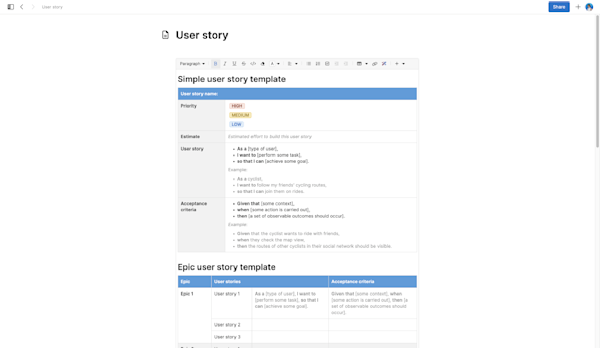FAQs about SWOT analysis
Who should be involved in a SWOT analysis?
Company and product leaders are typically responsible for conducting a SWOT analysis — with input and research from internal teams as well as external stakeholders (like partners and even customers). But exactly who is involved will vary depending on the type of organization and its maturity. For example, the founder or CEO of an early-stage startup might take charge of conducting a SWOT analysis. At a more established organization, however, leaders from the product and marketing teams might do it (while seeking input from cross-functional groups).
What are some tips for conducting a SWOT analysis in a team setting?
Gathering data and insights from a variety of teams across the organization is vital to a strong and comprehensive SWOT analysis. Our biggest tip? Use the right collaborative tool. Many product teams use purpose-built software like Aha! Roadmaps to create, view, share, and update a SWOT matrix, all in one place. You can build your SWOT matrix from scratch or use a virtual whiteboard to conduct an interactive SWOT analysis. No matter which tool you choose, pick one that allows everyone on the team to contribute their notes or research and easily refer back to the SWOT matrix after it is created.
What are some common mistakes to avoid when conducting a SWOT analysis?
Keep your list of strengths, weaknesses, opportunities, and threats simple and streamlined. Avoid listing too many points (it is best to stick to four to five points for each quadrant of the matrix). That said, you do not want to be superficial — make sure you spend meaningful time gathering research so you can conduct a robust analysis.
Some other mistakes? One is failing to take action on the meaningful discussions sparked by your SWOT analysis. Be sure to rank and prioritize your findings against the company and product strategy, then come up with a plan for pursuing the most important ones. Another common mistake is not reviewing and updating your SWOT analysis regularly to account for industry and market changes.
What are some creative ways to present the findings of a SWOT analysis to stakeholders?
Think about who your audience is, then tailor your SWOT analysis presentation to them. For example, you will likely want to give a more high-level overview to executives but go more granular when presenting to the product or marketing teams. Visuals also go a long way in holding an audience's interest — make use of diagrams, charts, and colors in addition to text. Whiteboarding software is ideal for this. You can collaborate with teammates to build your own SWOT matrix, or use our expert-crafted SWOT analysis template to quickly built a beautiful SWOT matrix that you can add to your presentation.
Product development has never been this lovable. Try Aha! software today.













